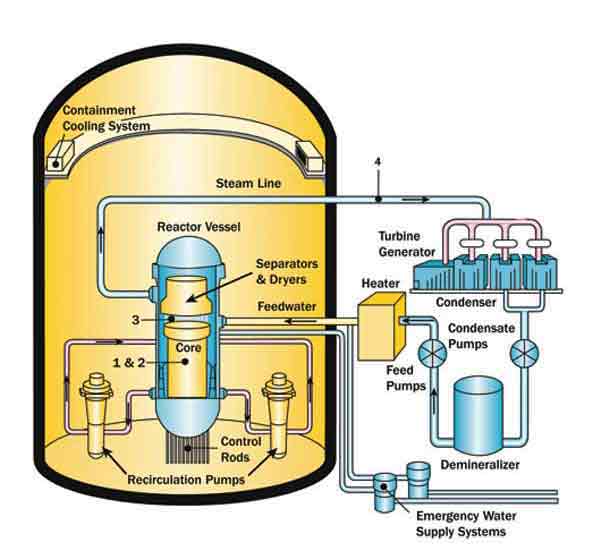Boiling Water Reactors
In a typical commercial boiling-water reactor, (1) the core inside the reactor vessel creates heat, (2) a steam-water mixture is produced when very pure water (reactor coolant) moves upward through the core, absorbing heat, (3) the steam-water mixture leaves the top of the core and enters the two stages of moisture separation where water droplets are removed before the steam is allowed to enter the steam line, and (4) the steam line directs the steam to the main turbine, causing it to turn the turbine generator, which produces electricity. The unused steam is exhausted into the condenser where it is condensed into water. The resulting water is pumped out of the condenser with a series of pumps, reheated and pumped back to the reactor vessel. The reactor's core contains fuel assemblies that are cooled by water circulated using electrically powered pumps. These pumps and other operating systems in the plant receive their power from the electrical grid. If offsite power is lost emergency cooling water is supplied by other pumps, which can be powered by onsite diesel generators. Other safety systems, such as the containment cooling system, also need electric power. Boiling-water reactors contain between 370-800 fuel assemblies. See also our animated diagram.



